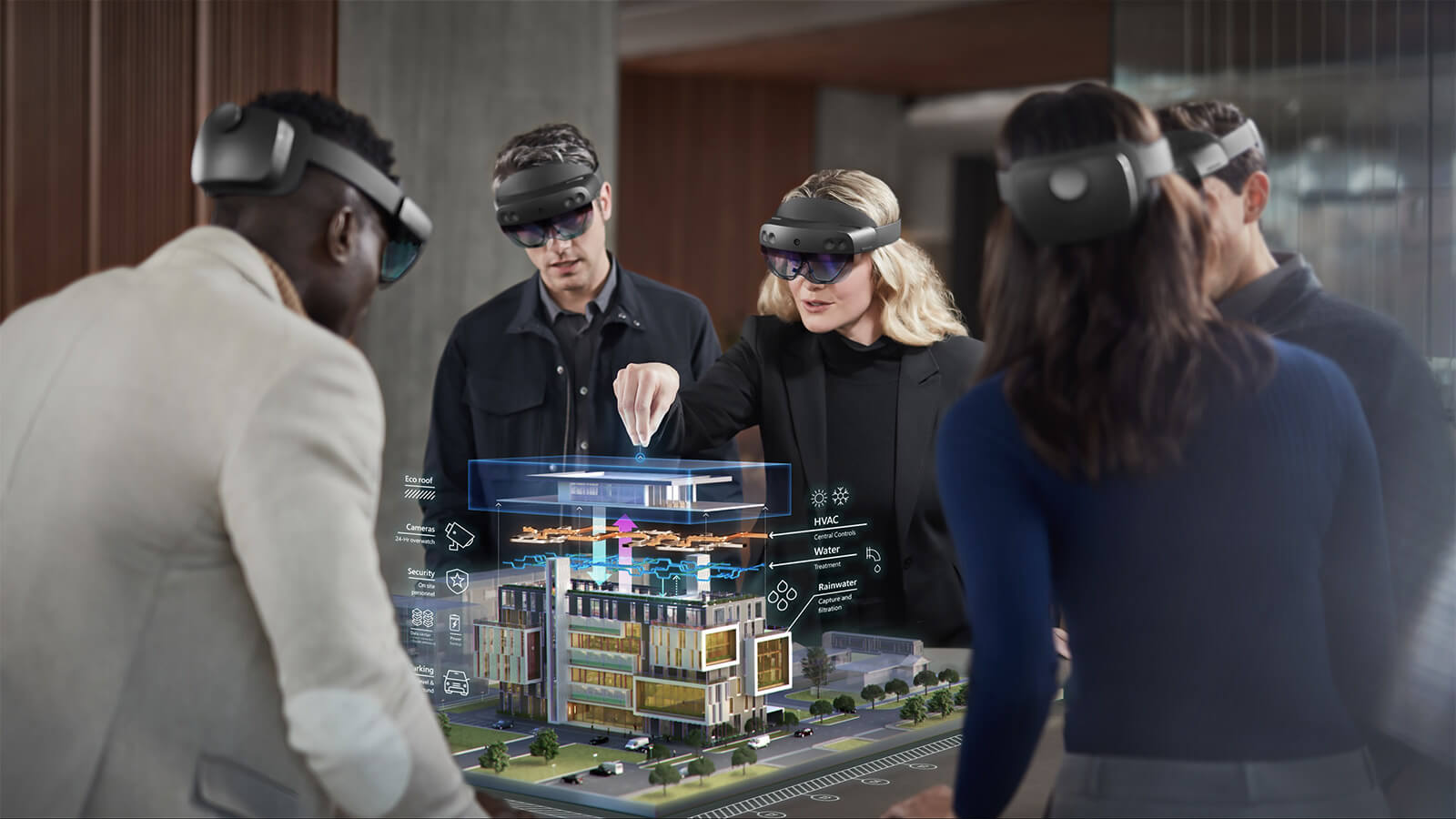Microsoft HoloLens 2 needs to get into living rooms sooner rather than later
Opinion: this incredible tech would massively boost home life

Watching someone use Microsoft’s HoloLens 2 while holding a conversation with you is almost as good of a demonstration as using it yourself. It’s a glimpse at the wild future of computing in store for us – all of us – mere years from now.
While watching Greg Sullivan, director of communications for Microsoft’s HoloLens division, swipe at, pinch and tap invisible objects in the demo room – all the while answering my endless questions about how the device works – I’m in awe of the dexterity with which he does it all.
Sure, this is someone who has given these demos to the press and analysts likely hundreds of times by now, but he does so with such intuition or even instinct that you or I would approach a touchscreen or keyboard with today. There’s something that comes so incredibly natural to him about it that’s convincing enough of what technology like HoloLens 2 holds for the future.
Then, I put the headset on for the first time.
Surprisingly, all of my assumptions are affirmed. This is a brand new technology that’s still in development, after all, but it’s nevertheless telling of where computing is headed in the long-term future.
So sad am I to hear Sullivan tell me, then, that consumers shouldn’t expect to see Microsoft entertain a consumer version of its augmented reality (AR) for another few years at least. This is especially depressing because, like far too many things, it comes down to money.

The highest hurdle in front of HoloLens 2
Simply put, HoloLens 2 is just too expensive of a product to produce at mass market scale. Sure, plenty of people are clearly entertaining the prospect of a $1,980 (£1,800, about AU$2,810) Samsung Galaxy Fold that might not even work.
Get daily insight, inspiration and deals in your inbox
Sign up for breaking news, reviews, opinion, top tech deals, and more.
Alas, the HoloLens 2 sticker price of $3,000 (about £2,290, AU$4,260) is just too much for the majority of consumers today.
With that, Microsoft is focused on enterprise, industrial design and field work applications, areas where businesses can recoup the high cost almost instantly in the amount of regular expenses the headset would eliminate. If a Japanese airline can troubleshoot one of its planes grounded in Australia without sending an engineer down there personally, the one-time price of HoloLens 2 would cover those travel costs – and nearly every cost thereafter – instantly, Sullivan tells me.
He makes an excellent point. This is why HoloLens 2 makes much more sense as a product for businesses than it does for our living rooms today.
But, if Microsoft wants to see its incredible vision for holographic computing gain critical mass, it’s going to need to produce a version of the technology that more consumers can afford.
The HoloLens is already inside classrooms at nearly all levels of learning, I’m told, but that won’t be enough if those same lucky students can’t take those immersive lessons home with them.
Perhaps pricing closer to that of, say, the first folding phones would be more palatable. Pre-orders of the Samsung Galaxy Fold sold out shortly after they were made available, and that’s only the first crack at such technology – one that isn’t going so well at that.
Meanwhile, HoloLens 2 is a clearly more proven product being the second version, but it’s still prohibited from mass market growth today.
It’s likely that one or more of the parts within the HoloLens 2 headset that create the AR experience are too expensive to source or produce in-house for Microsoft to price it more appropriately for consumers. That is, at least in the short term.

Microsoft clearly wants this
But, I’m told that Microsoft isn’t ruling out the possibility of releasing a mass market version of HoloLens in a matter of years. To wit, one of the company’s first times introducing the headset was at its E3 gaming conference keynote, showing what mega-hit Minecraft could look and play like in AR.
Sullivan himself confirms to me this is exactly why Microsoft chose this as one of the first showings of the technology many years ago. Microsoft used the event to gauge consumer interest, but it was likely the later-revealed price that scared folks away – not the device itself.
Even if that was the case, HoloLens 2 solves many of the issues with the first model in terms of comfort and usability. After trying it out at Build 2019, it’s so much more improved that I would love to see an enhanced version of Pokémon Go for HoloLens 2: imagine multiplayer Pokémon battles playing out on your coffee table.
Beyond that, the implications for home life are exciting regardless. Connecting with long-distance friends and family as if they’re in the room with you, taking homework to the next level and drastically enhanced board games are just the beginning.
While it’s already merely a matter of when we’ll see Microsoft’s HoloLens technology offered up to consumers in an earnest way, the civilian world is ready for it now … and we’re growing impatient.
- These are the best laptops to date, most which running Windows
Image Credits: Microsoft
Joe Osborne is the Senior Technology Editor at Insider Inc. His role is to leads the technology coverage team for the Business Insider Shopping team, facilitating expert reviews, comprehensive buying guides, snap deals news and more. Previously, Joe was TechRadar's US computing editor, leading reviews of everything from gaming PCs to internal components and accessories. In his spare time, Joe is a renowned Dungeons and Dragons dungeon master – and arguably the nicest man in tech.
